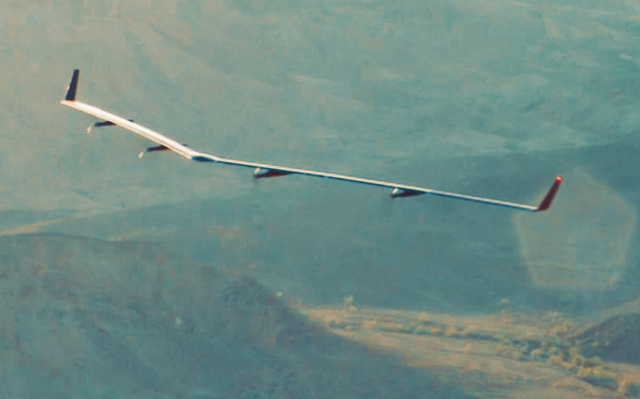uasvision.com
December 20, 2016

Following an official investigation into the crash landing, America’s National Transportation Safety Board found that wind and turbulence caused part of the wing to snap during flight.
“On June 28, 2016, at 0743 mountain standard time, the Facebook Aquila unmanned aircraft, N565AQ, experienced an in-flight structural failure on final approach near Yuma, Arizona. The aircraft was substantially damaged,” the report explains.
It was the first flight of the full-scale aircraft and the report adds there were no injuries or ground damage. It launched in restricted airspace from Yuma Proving Ground’s (YPG) and “there were no anomalies” during the 90-minute flight.
“According to the operator, at 0704, a simulated landing at 1,250 feet above sea level was performed to test the autoland feature of the autopilot. At the time of the simulated landing, the crew noted that the wind had increased above the intended test limit of 7 knots at flight altitude,” continues the report.
“At 0737, the crew commanded a landing to the designated landing site. During the final approach, the aircraft encountered an increasing amount of turbulence and wind speeds of up to 10 knots at the surface and 12 to 18 knots, as measured by the aircraft at flight altitude.”
Telemetry analysis from the flight then showed the plane had to deviate from its course and as it reached 20 feet above the ground, the right wing “experienced a structural failure with a downward deflection”. The plane then hit the ground at a speed of 25 knots.
The report concludes that the damage was therefore caused as a result of the impact and wing failure.
Source: National Transportation Safety Board
Read more at:
http://www.uasvision.com/2016/12/20/too-much-wind-caused-facebooks-aquila-crash/
No comments:
Post a Comment